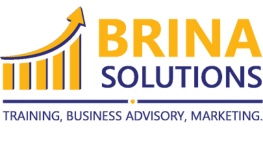
In today’s fast-paced business environment, operational efficiency is crucial for maintaining competitiveness and profitability. Artificial Intelligence (AI) and automation are revolutionizing the way organizations function, enabling them to streamline operations, reduce costs, and improve accuracy. This blog explores how businesses can leverage AI and automation to optimize workflows and achieve sustainable growth.
1. Understanding AI and Automation
AI refers to the use of machines and algorithms to simulate human intelligence, while automation involves using technology to perform tasks with minimal human intervention. Together, they transform repetitive processes and decision-making into seamless, efficient workflows.
2. How AI and Automation Enhance Operations
A. Increased Productivity
By automating time-consuming tasks, employees can focus on strategic initiatives that require creativity and critical thinking.
Example: A retail company uses AI-powered inventory management systems to predict stock levels and automate replenishment, saving hours of manual tracking.
B. Cost Savings
Automation reduces labor-intensive processes, cutting operational expenses while maintaining high-quality output.
Example: Chatbots provide 24/7 customer support, reducing the need for large support teams.
C. Improved Accuracy
AI-powered systems minimize errors in processes like data entry, billing, and reporting.
Example: Financial institutions use AI to detect fraud and automate compliance checks, ensuring regulatory adherence with precision.
3. Key Areas Where AI and Automation Drive Efficiency
A. Supply Chain Management
AI enhances logistics with real-time tracking, demand forecasting, and optimized delivery routes.
Example: A logistics firm uses AI to predict delays and adjust routes, improving delivery times and customer satisfaction.
B. Human Resource Management
Automation streamlines recruitment, onboarding, and employee performance tracking.
Example: AI tools analyze resumes to shortlist candidates, saving HR teams countless hours.
C. Marketing and Sales
AI-driven tools personalize campaigns and automate lead generation, increasing customer engagement and conversion rates.
Example: Email marketing platforms use AI to send targeted messages based on user behavior and preferences.
D. Customer Service
Chatbots and virtual assistants handle inquiries, freeing human agents for complex issues.
Example: A telecom provider uses an AI chatbot to resolve common problems like billing inquiries, reducing wait times.
4. Steps to Implement AI and Automation in Your Business
- Identify Pain Points: Assess your operations to determine repetitive tasks or areas with frequent errors.
- Set Clear Objectives: Define what you want to achieve, such as cost savings, improved speed, or better accuracy.
- Choose the Right Tools: Research platforms and tools that align with your business needs.
- Train Your Team: Ensure employees understand how to use AI and automation systems effectively.
- Monitor and Optimize: Regularly review performance metrics to refine and improve your automation strategy.
5. Challenges and Solutions in Implementing AI and Automation
A. High Initial Costs
Solution: Start small with pilot programs and scale up as you achieve ROI.
B. Resistance to Change
Solution: Involve employees early, provide training, and emphasize the benefits of automation.
C. Integration Issues
Solution: Work with experienced vendors to ensure seamless integration with existing systems.
Conclusion: The Future is Automated
AI and automation are no longer optional—they’re essential for businesses aiming to remain competitive in 2025 and beyond. By streamlining operations, reducing costs, and improving accuracy, these technologies empower companies to focus on growth and innovation.
Looking to integrate AI and automation into your operations? Brina Solutions offers expert guidance and tailored strategies to help your business thrive. Contact us today to get started!







Leave a Reply